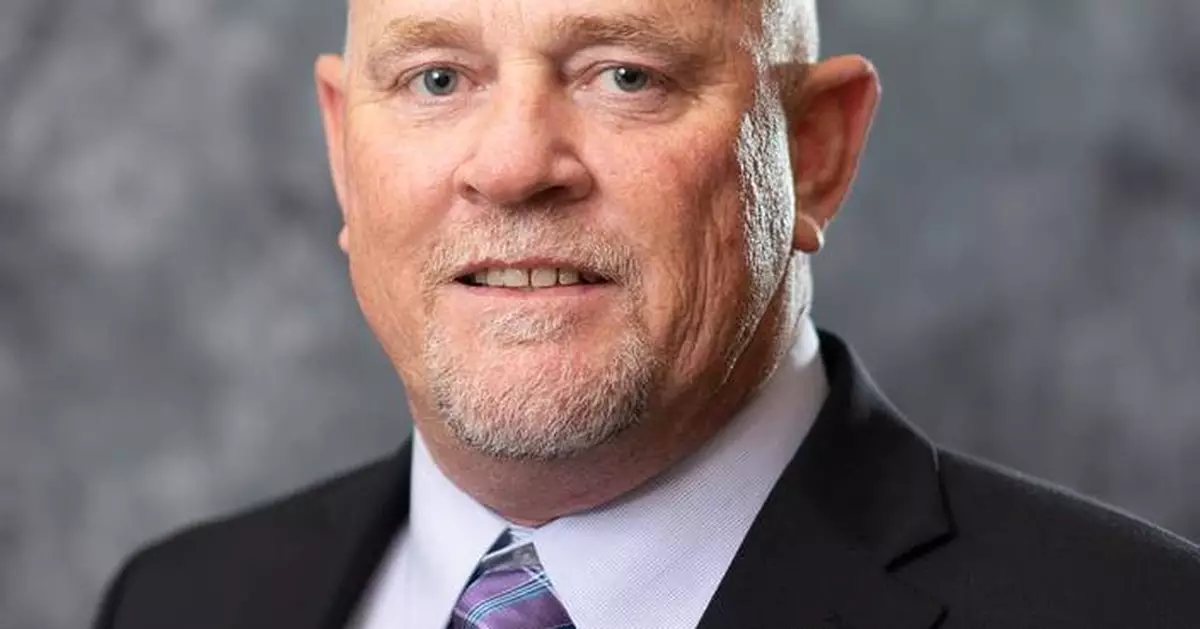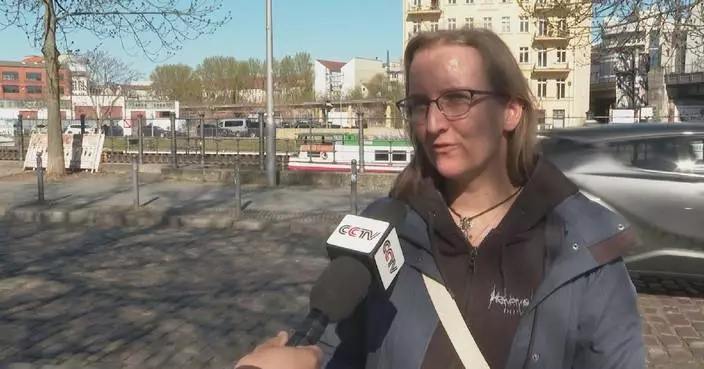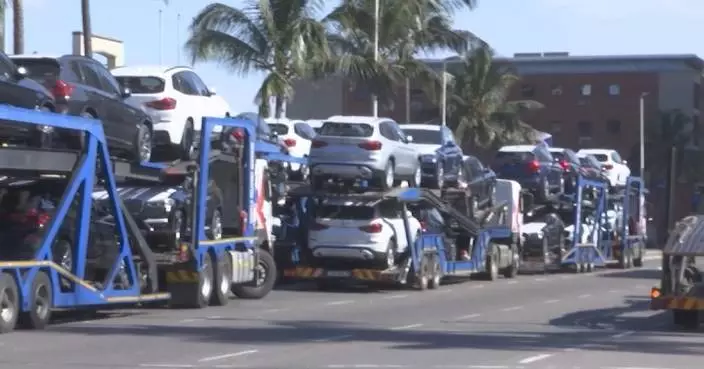SARASOTA, Fla.--(BUSINESS WIRE)--Mar 31, 2025--
Helios Technologies, Inc. (NYSE: HLIO) (“Helios” or the “Company”), a global leader in highly engineered motion control and electronic controls technology, announced today that it has streamlined the structure of its Electronics Segment with the naming of Billy Aldridge as Senior Vice President, Managing Director, Electronics Segment. Mr. Aldridge replaces Lee Wichlacz who has been separated from the Company. We thank Mr. Wichlacz for his two years of service and wish him the best in his future endeavors.
This press release features multimedia. View the full release here: https://www.businesswire.com/news/home/20250331346591/en/
“We believe the realignment within our Electronics Segment will enhance customer engagement, sharpen the focus on our new go-to-market strategy and streamline day-to-day operations. As a result, the Electronics Segment is well positioned to drive our strategic initiatives and intensify attention on our 2025 objectives,” said Sean Bagan, President, Chief Executive Officer, and Chief Financial Officer of Helios. “Billy has demonstrated strong leadership, deep customer relationships, and excellent operational knowledge. I have great confidence in his ability to take the Electronics Segment to the next level.”
Mr. Aldridge has served as the Senior Vice President, Managing Director of Enovation Controls since May 3, 2021, and will now have responsibility for the complete group of operations that comprise the Electronics segment. He joined FW Murphy, a division of Enovation Controls, in 2008 as the OEM Sales Manager where he grew the marine market prior to stepping into a Director position in 2015 and then in 2018 moving to the Vice President of Business Development. Mr. Aldridge joined MerCruiser/Mercury, part of the Brunswick Corporation in 2000, where he earned his Lean Six Sigma and worked in many different functional areas including Supply Chain, Program Management & OEM Sales. He has a bachelor’s degree in Sociology from Oklahoma State University.
About Helios Technologies
Helios Technologies is a global leader in highly engineered motion control and electronic controls technology for diverse end markets, including construction, material handling, agriculture, energy, recreational vehicles, marine and health and wellness. Helios sells its products to customers in over 90 countries around the world. Its strategy for growth is to be the leading provider in niche markets, with premier products and solutions through innovative product development and acquisitions. The Company has paid a cash dividend to its shareholders every quarter since becoming a public company in 1997. For more information please visit: www.heliostechnologies.com and follow us on LinkedIn.
CAUTIONARY NOTE REGARDING FORWARD-LOOKING STATEMENTS
Statements in this press release may constitute forward-looking statements within the meaning of the Private Securities Litigation Reform Act of 1995, including those statements in the various quotations. Although the Company believes that its expectations are based on reasonable assumptions within the bounds of its knowledge of its business and operations, actual results may differ materially from the Company’s expectations. Factors that could cause actual results to differ from expectations include the ability to successfully implement its strategy, including the Company’s profit recovery and growth plan; successfully transition its leadership; and those other factors described in the Company’s filings with the Securities and Exchange Commission, including its most recent Annual Report on Form 10-K. The Company assumes no responsibility to update forward-looking statements made herein or otherwise, and such statements are made on the basis of views and assumptions regarding future events as of the time such statements are made.


Helios Technologies, Electronics Segment names Billy Aldridge as Senior Vice President, Managing Director
CORTINA D'AMPEZZO, Italy (AP) — Zen, a 5-year-old border collie, circled friskily around a mound of snow as he picked up a scent, his quick movements signaling to his handler that someone was buried deep below.
Zen has been a rescue dog for three years, and on this day, he was setting an example for 20 others dogs being certified for avalanche rescue in the heart of the Italian Dolomites, where the breathtaking jagged peaks have long enchanted writers, painters and outdoor enthusiasts alike.
The role of dogs in Italian alpine rescues is becoming more important as the number of people caught by avalanches increases — up by 50% over the past 25 years.
Climate change has made heavy, wet snow more common in midelevations between 1,500-2,500 meters (5,000-8,000 feet) where most excursionists venture, which makes avalanche survival less likely by compressing air pockets that would allow a trapped alpine or off-piste skier to breathe.
A trained avalanche rescue dog's nose can locate someone buried deep in the snow more accurately than any transponder, making their role fundamental in reaching victims "in the shortest possible time,'' said Adriano Favre, who ran the canine training camp in the mountains above Cortina D'Ampezzo, a chic ski resort and a venue of the 2026 Winter Olympic Games.
After picking up the scent, Zen energetically emerged with a sign of life — a rope tug toy — from the snow den masquerading, for the purposes of the training exercise, as an avalanche. Shortly after, his handler digs a volunteer victim out of the snow, and showers Zen with praise and affection.
“All of our dogs need to have an intense relationship with the handler. If not, we can’t read what he is trying to tell us,’’ said Zen’s handler, Paolo Sbisa, who has raised him from puppyhood. “Once the relationship is built, they will do anything to make us happy.’’
Nine days earlier, on a nearby pass just 3 miles (2 kilometers) away as the crow flies, Zen’s mission was deadly serious.
Three backcountry skiers were buried by an avalanche on Giau Pass at 2,300 meters — normally a route for beginners amid scenic rugged rockfaces near a mountain road that turned deadly the day after a heavy snowfall.
Zen and his handler were on the first helicopter leaving base 10 minutes away. By the time they arrived, witnesses had pulled a 51-year-old man from the snow. Rescuers located the second victim with a transponder, a 38-year-old man buried 2 meters (6 feet) deep.
Zen’s nose was key to locating the third skier, a 40-year-old woman buried in 3 to 4 meters (9 to 12 feet) of snow — deeper than the usual, according to Sbisa, making the role of a rescue dog critical in determining where to dig.
Despite their efforts, both she and the second victim died — revealing a disheartening truth: If you need a dog to find you, it’s probably too late. For this reason, Sbisa and other rescuers say it is critical for backcountry excursionists to have and know how to use transponders, foldable probes and shovels, as the best chance of survival is self-rescue by companions or witnesses. Dogs, more often than not, locate bodies.
“If something goes wrong though, the only weapon Alpine rescuers have to search is dogs," Sbisa said. "We have no other chance.″
Avalanches involving people who need rescue in Italy have doubled since the turn of the century from a rolling average of 30 a year to 60, according to the AINEVA snow and avalanche monitoring service. During the same period, the number of excursionists struck on average also increased significantly, from 65 a year to 110 a year, based on rolling averages.
For those who are buried, survival comes down to time. The best chance comes when a person freed in the first 10 to 15 minutes, said Igor Chiambretti, the technical chief of Italy’s AINEVA snow and avalanche association. If not found within 35 minutes, studies show 70% of victims die of asphyxiation.
Rescue dogs in Italy are always on the first helicopter leaving base. But it typically takes 15 to 20 minutes to arrive at any avalanche scene. Bad weather prolongs that window.
Putting a pair of avalanche dogs at ski areas instead would reduce that arrival time to five minutes, something Chiambretti said is being considered in Italy, where 80 avalanche dogs are active.
Adding to the risk are snow dumps — heavy wet snow with the water content between 3% and 8%. They were once considered spring snow, but now come as early as December, thanks to more moisture in the air and warmer temperatures, Chiambretti said.
They are especially common in the heavily trafficked middle altitudes and reduce the chances of survival by compressing air pockets. With more of this kind of snow, the number of people to survive a complete burial will be fewer and fewer, Chiambretti said.
Snow dumps have grown especially more common in Italy, on the southern edge of the Alps, facing the Mediterranean Sea.
“The Mediterranean basin is considered a so-called hot spot, that is an area of the planet where climate change, particularly warming, is more than the global average,’’ said Gianni Marigo, an AINEVA climatologist. The Italian Alps, in turn, “are a hot spot within a hot spot."
The big picture of climate change also means less overall snow for avalanches as glaciers globally shrink, especially in the Alps. Snow depth levels in the southwestern Alps has decreased nearly 5% a decade since the 1980s, according to a 2024 study.
“With a wetter and warmer snow climate, consequences of burial will be more severe,'' while blunt trauma will become more likely as snow cover becomes thinner, according a 2021 study published in Frontiers in Physiology. "Asphyxia and trauma, as causes of avalanche death, may increase."
By the time a rescue dog located Roberto Ferrino buried beneath an avalanche in the Alps of northwestern Piedmonte, the lone backcountry skier had been buried for 4 hours and 40 minutes — well beyond the average survival time.
To this day, seven years after his accident, neither Ferrino nor his wife know how he made it — except that an air pocket formed around him that allowed him to breath. His body temperature dropped to 26 degrees Celsius (78.8 Fahrenheit) and heart rate to 30 beats per minute.
Still, Ferrino doesn't regret braving the mountains alone that day despite warnings of a “considerable” avalanche risk. He says his error was in choosing a steep slope and not paying attention to the winds.
"If I had done the normal route, nothing would have happened,'' he said.
Barry reported from Rome.
The Associated Press’ climate and environmental coverage receives financial support from multiple private foundations. AP is solely responsible for all content. Find AP’s standards for working with philanthropies, a list of supporters and funded coverage areas at AP.org.

Avalanche dog Brina attends a training with the Italian National Alpine and Speleological Rescue Corps in Col Gallina, near Cortina D'Ampezzo, northern Italy, Tuesday, March 25, 2025. (AP Photo/Luca Bruno)

A rescue team waits at their base during a training with the Italian National Alpine and Speleological Rescue Corps in Col Gallina, near Cortina D'Ampezzo, northern Italy, Tuesday, March 25, 2025. (AP Photo/Luca Bruno)

Italian National Alpine and Speleological Rescue Corps, attend a training in Col Gallina, near Cortina D'Ampezzo, northern Italy, Tuesday, March 25, 2025. (AP Photo/Luca Bruno)

Avalanche dog Phoenix attends a training with the Italian National Alpine and Speleological Rescue Corps in Col Gallina, near Cortina D'Ampezzo, northern Italy, Tuesday, March 25, 2025. (AP Photo/Luca Bruno)

Ira, a dog with the Italian National Alpine and Speleological Rescue Corps, attends a training in Col Gallina in the Italian Alps near Cortina D'Ampezzo, northern Italy, Tuesday, March 25, 2025. (AP Photo/Luca Bruno)
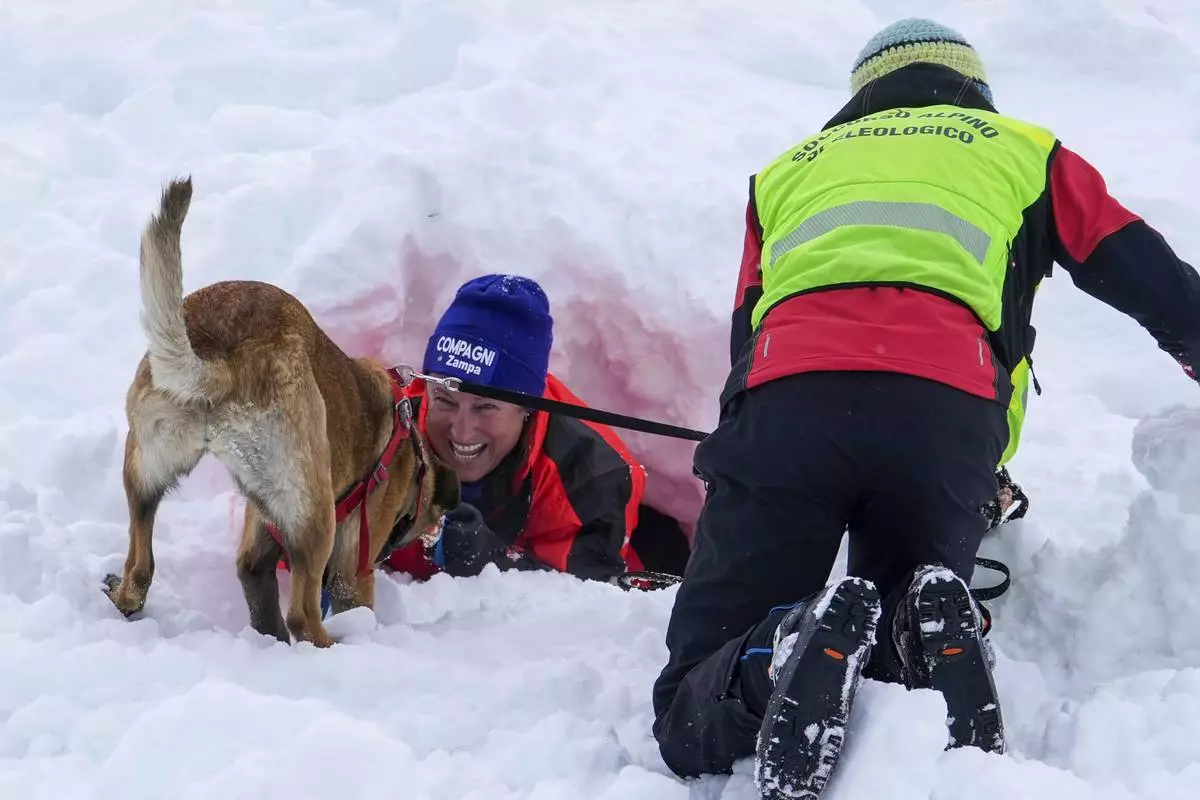
Avalanche dog Brina is praised by her trainer Silvia Anselmetto during a training session with the Italian National Alpine and Speleological Rescue Corps in Col Gallina, near Cortina D'Ampezzo, northern Italy, Tuesday, March 25, 2025. (AP Photo/Luca Bruno)

Italian National Alpine and Speleological Rescue Corps, attend a training in Col Gallina, near Cortina D'Ampezzo, northern Italy, Tuesday, March 25, 2025. (AP Photo/Luca Bruno)

A man is helped out from under the snow during a training of the Italian National Alpine and Speleological Rescue Corps in Col Gallina, near Cortina D'Ampezzo, northern Italy, Tuesday, March 25, 2025. (AP Photo/Luca Bruno)
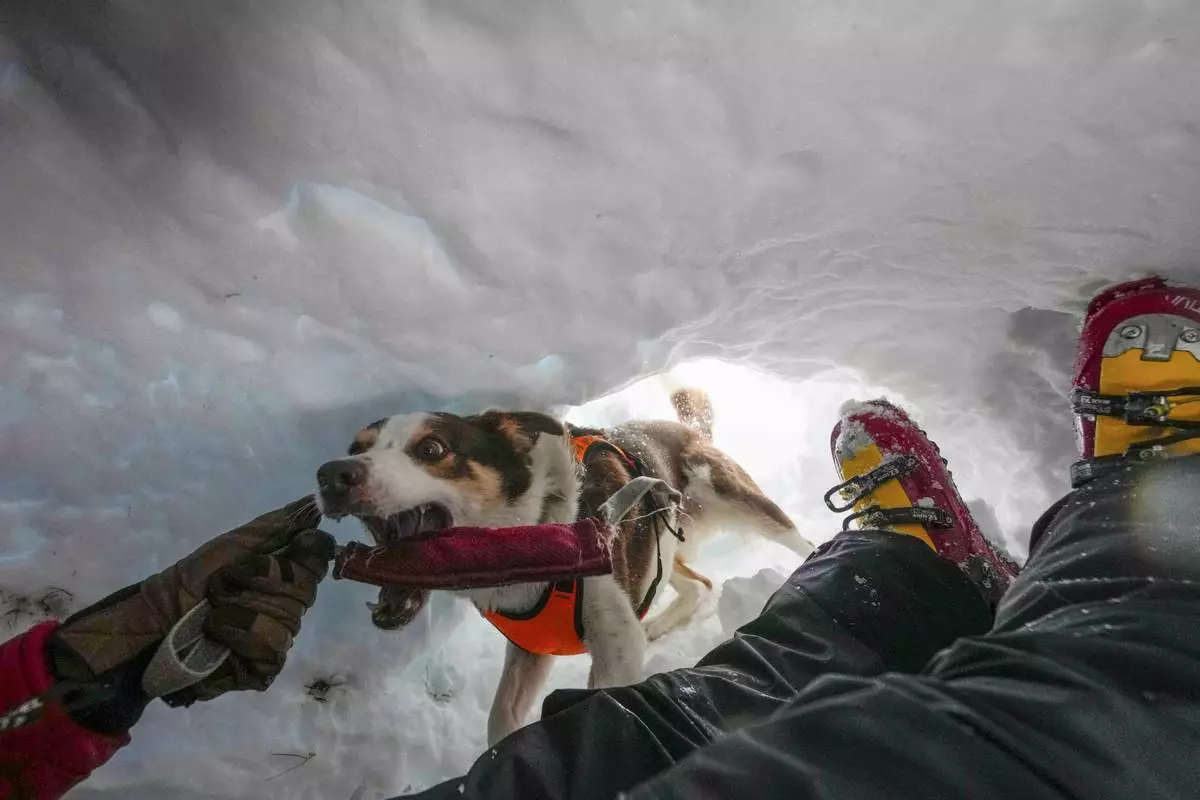
Zen, an avalanche Border Collie, attends a training with the Italian National Alpine and Speleological Rescue Corps in Col Gallina, near Cortina D'Ampezzo, northern Italy, Tuesday, March 25, 2025. (AP Photo/Luca Bruno)




